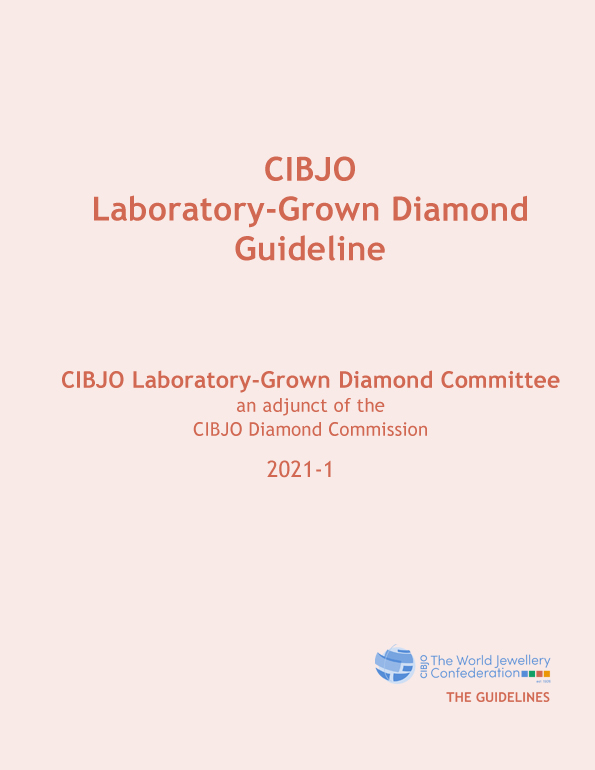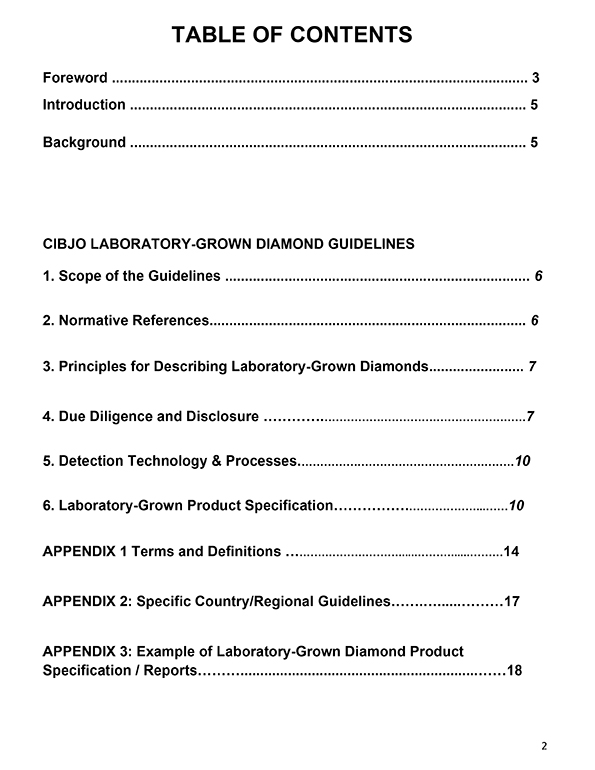Laboratory-Grown Diamond Guideline
CIBJO’S Laboratory-Grown Diamond Guideline provides a set of operating standards and principles for the laboratory-grown diamond sector that are designed to enhance consumer confidence both in the product and the jewellery industry. The underlying understanding is that, to ensure confidence, consumers must receive complete and unambiguous information about what they are buying, so that they can make consciously informed purchasing decisions. This requires clear and accurate information that the laboratory-grown diamonds were created through industrial processes, and not geologically, as is the case with natural diamonds.



Examples of pages from the CIBJO Laboratory Grown Diamond Guideline.
Divided into various sections, the guidance document outlines clear principles for describing laboratory-grown diamonds, well as due-diligence measures that should be followed by companies handling laboratory-grown diamond merchandise and attending events at which they are displayed, like trade shows. It furthermore recommends the manner in which loose laboratory-grown diamonds or jewellery set with laboratory-grown diamonds should be disclosed on sales invoices and consignment documents. The document also addresses the subject of laboratory-grown diamond detection technology.
A key section of the document relates to the services provided by gem labs to the laboratory-grown diamond sector. It holds to the principle that the confidence of consumers will be served by their receiving an accurate and objective report of the characteristics of the laboratory-grown stone that they are buying, but, since such reports are unrelated to a laboratory-grown diamond’s rarity, care should be taken that the report itself does not infer a similarity between a laboratory-grown diamond and a natural diamond. The guidance recommends, therefore, that the report is referred to a “Laboratory-Grown Diamond Product Specification,” and not a grading report.
The Laboratory-Grown Diamond Guideline document was developed by a special working group within CIBJO that was established in 2018, which included representatives of both the natural and laboratory grown diamond sectors. At the 2019 CIBJO Congress in Bahrain, the working group was provided the status of a full committee, the Laboratory Grown Diamond Committee, and it is affiliated to the CIBJO Diamond Commission, although it operates independently.
Before being released, the document was subject to both an internal and external review of industry experts. Like CIBJO’s Blue Books, it is considered a living document, meaning that is subject to change according to new information, technologies and market conditions.
